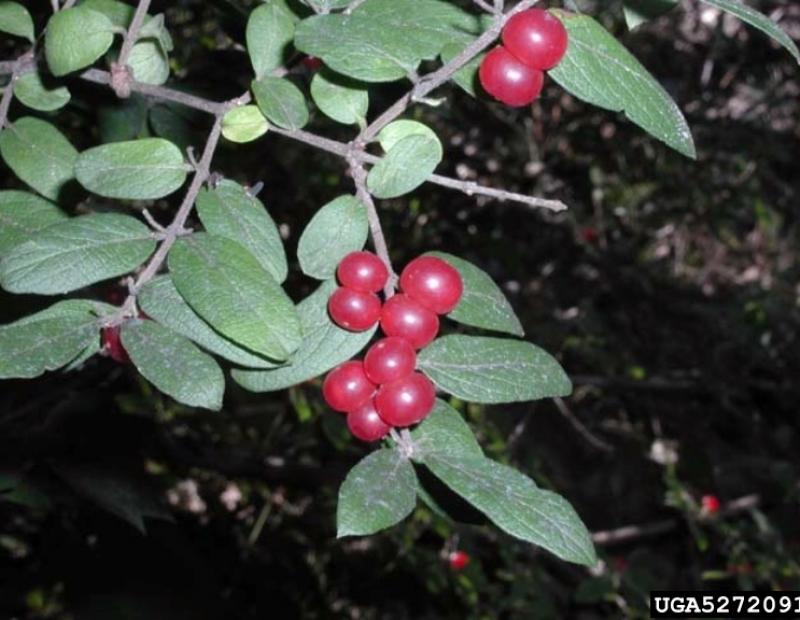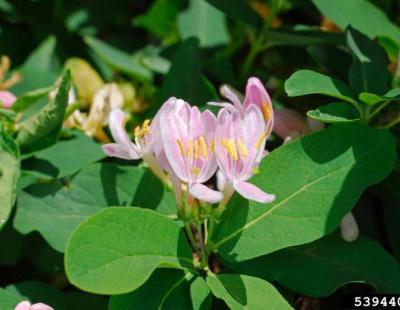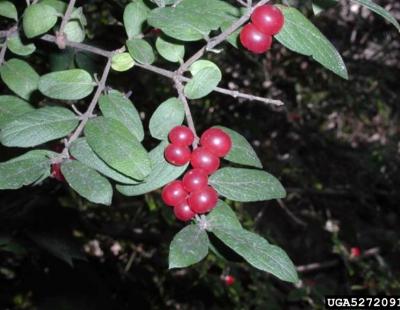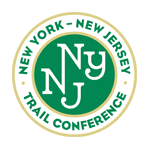- Terrestrial Plants
- Shrub or woody bush
Dense growths of Bell's honeysuckle can supress native plant and timber regeneration and create monocultures. Infestations can substantial reduce ecosystem richness and density of tree seedlings. This species can alter a habitat's microclimate by creating dense shade, and depleting soil soil and nutrients. It can reduce growth of native plants by releasing allelopathic chemicals. It can be especially harmful to spring ephemerals, because of its early leafing.
Bell's honeysuckle is a hybrid between Morrow's honeysuckle, which is native to Japan, and Tartarian honeysuckle, which is native to Eurasia. It has been naturalized in many Northeast and Midwest U.S. states. It has spread from deliberate horticulture, wildlife habitat, and erosion control planting.
It is taller than either parent plant, and can reach up to 20 ft. The leaves are oval, opposite and are about 1-3 inches long, with the underside being slightly pubescent. They have paired flowers that appear in the axils of the leaves, and are typically pink, turning yellow with age. Thes flowers bloom between May and June. The fruits of the honeysuckle are spherical, red and found in pairs.
Bell's honeysuckle is adaptable to a wide variety of habitats ranging from open forests to fields and roadsides. They are very tolerant to a wide range of moisture and light conditions. The plant can be frequently found along forest edges, roadsides, old fields, disturbed sites, utility right-of-ways, and vacant or abandoned lots.







